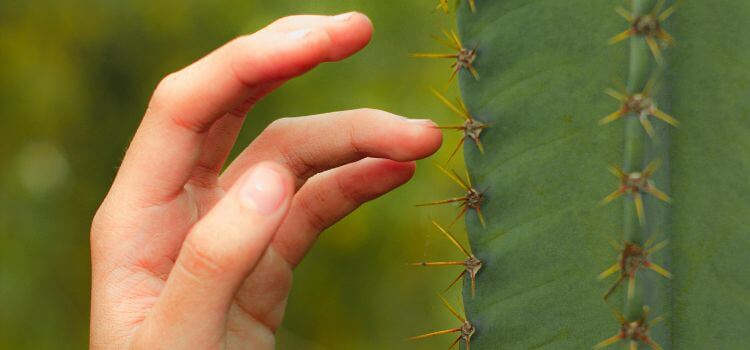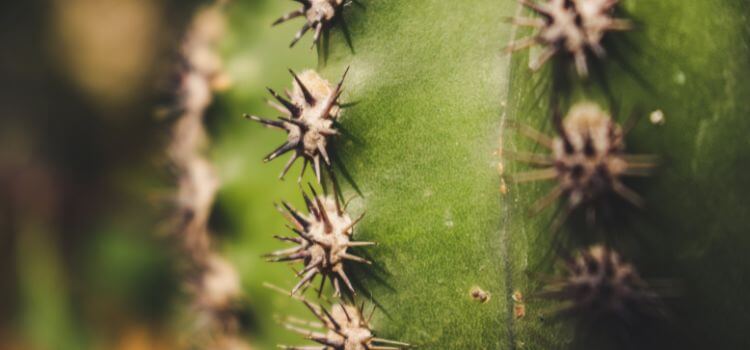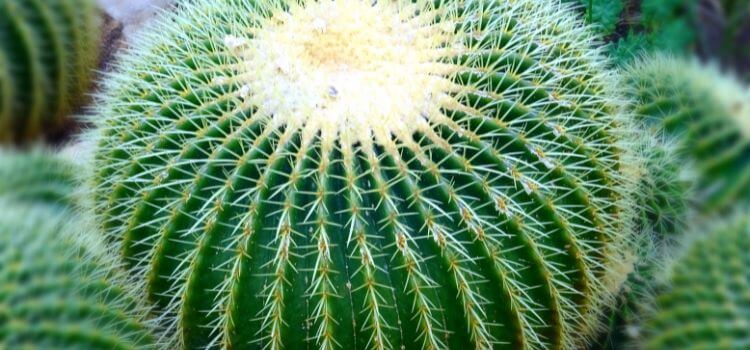As an Amazon Associate, I earn from qualifying purchases.
When it comes to handling cacti, one of the biggest concerns is getting pricked by their needles. While most cactus needles are not poisonous, they can cause discomfort and potential health risks if left untreated.
The first question that may come to mind when dealing with a cactus needle prick is how long does it take for the needle to dissolve? Or you’re interested in learning about the factors that affect the dissolution of these prickly plants.
This guide will discuss everything you need about cactus needles and their dissolution process.
What are Cactus Needles?
Cactus needles, or spines, are modified leaves or specialized structures that defend the plant. They grow on the outer layer of the cactus and come in various sizes, shapes, and colors.
Why Do Cacti Have Needles?
Cacti have evolved to develop needles to protect themselves from predators. The smaller spines shade and trap moisture, while the more robust spines deter predators.
What is the composition of cactus needles?
Cactus needles are made of “wax” from the outer layers. This wax helps the cactus protect itself from predators and the elements. The wax also helps the cactus store water and nutrients.
Cactus needles have two layers: hard wax on the outside and softer wax inside. Its inner layer stores water and nutrients, while its outer layer protects it from the environment. Cactus needles can vary in size and shape, depending on the type of cactus.
Generally, most miniature needles are about 1/4 inch long, while larger needles can be up to 8 inches long.

How Long Does It Take for Cactus Needles to Dissolve?
Cactus needles dissolve at different rates depending on the type and location of the needles. Typically, cactus needles can take a few months to a couple of years to fully dissolve.
The Dissolution Process
For example, cactus needles comprise cellulose, an organic substance found in plant cells. When pricked by a needle, our body’s natural response is to try and dissolve the foreign object.
This process can take several days to weeks, depending on the size and depth of the needle prick.
Factors Affecting Dissolution
Several factors can affect the dissolution process of cactus needles. These include:
- Size and Depth of Needle Prick: The larger and deeper the needle prick, the longer it will take for our body to dissolve it.
- Type of Cactus: Some cacti have thicker and sharper needles, which can take longer to dissolve than smaller and thinner ones.
- Individual Immune Response: Our body’s immune response also affects how quickly it can dissolve cactus needles. Some individuals may respond faster or slower, leading to varying dissolution times.
- Environmental Conditions: Factors such as temperature, humidity, and sunlight can also affect the dissolution time of cactus needles
Safety Measures When Handling Cacti
Be careful when handling cacti since their needles are spiky. Here are some safety measures you can take:
- Use Protective Gear: Thick gloves and long sleeves protect your hands and arms from needle pricks when handling cacti.
- Be Mindful of Surroundings: Keep a safe distance from cacti and watch where you step to avoid accidentally getting pricked.
- Handle with Care: When transplanting or repotting cacti, use tongs or a thick cloth to handle the plant instead of your bare hands.
Immediate Actions for Needle Pricks
If you get pricked by a cactus needle, take these crucial steps.:
- Remove the Needle: Gently remove the needle from your skin using tweezers or a clean cloth. Be careful not to break off any pieces of the needle.
- Wash the Area: Cleanse the area with soap and water to prevent infection.
- Monitor for Symptoms: Keep an eye on the prick site for signs of infection, such as redness, swelling, or discharge. If these symptoms persist or worsen, seek medical attention.

Potential Health Risks
While most cactus needles are not poisonous, they can pose health risks if not handled properly.
Most importantly, getting an infection if the needle is not taken out quickly and correctly. Allergic responses to cactus needles can produce swelling, redness, and itching.
In rare cases, cactus needles may carry harmful bacteria or fungi that can cause more severe infections. It is essential to see a doctor if a cactus needle prick turns out to be infected or if someone is in a lot of pain or has an allergic response.
What To Do if a Cactus Needle Gets Stuck
If a cactus needle pokes you, the first thing you should do is stay calm. Adrenaline, released during panic, can increase heart rate and circulation, spreading needle poisons.
Next, assess the depth and size of the prick. You can remove it with tweezers or tape if it is shallow and small. However, seek medical attention for effective removal and treatment if the prick is deep and wide.
Cactus Care Guide
Cacti are fascinating and low-maintenance plants that have become popular for indoor and outdoor gardens.
Whether you are a plant lover eager to increase your collection or a desert traveler, our thorough cactus care guide has all you need.
Some topics covered in our guide include:
- Choosing the Right Cactus: Learn about the different types of cacti and their specific care needs to find the perfect one for your space.
- Watering and Fertilizing: A crucial aspect of cactus care is understanding how much water and fertilizer your plant needs. Our guide provides detailed instructions on proper watering and fertilizing techniques.
- Sunlight Requirements: Cacti are desert plants requiring plenty of sunlight to thrive. Please find out how much sunlight your cactus needs and how to ensure it receives the right amount.
- Repotting and Transplanting: As cacti grow, they may need to be repotted or transplanted into a larger container. Our guide walks you through the steps and best practices for successful repotting.
- Common Pests and Diseases: Despite not needing much care, cacti can still get pests and diseases. Learn about the most common issues and how to prevent or treat them.
FAQ
It is not safe to feel cactus needles as they can cause skin irritation and infections. It is best to use gloves or a tool to remove them.
Yes, you can use a chemical to dissolve cactus needles. However, reading directions and applying chemicals is crucial.
Yes, it is possible to remove cactus needles without damaging the plant. You can use a tool such as tweezers or needle-nose pliers to remove the needles carefully.
Yes, using a tool such as tweezers or needle-nose pliers is recommended when removing cactus needles. This will help prevent plant damage and reduce the risk of infection.
If you get a cactus needle attached to your skin, you should try to remove it carefully. If you cannot remove it, you should seek medical attention immediately.
Conclusion
Finally, cactus kind, prick size and depth, and body chemistry affect how long a cactus needle dissolves. While cactus needles are not usually poisonous, they can pose health risks if left untreated.
Handle the cactus carefully and seek medical help if a needle prick causes infection or extreme pain. Cactus needles generally take several months to dissolve completely, but this time may vary depending on various factors.

